Opioids
As some of the most powerful and addictive substances, Opioids are one of the biggest challenges facing America today.
- The Opioid Epidemic
- Morphine
- Effects Of Morphine Use
- Morphine Detox
- How Long Do Opioids Stay In Your System?
- Codeine
- Effects Of Using Codeine
- Lean
- Codeine Detox
- Codeine Addiction Treatment And Rehab
- Demerol
- Effects Of Demerol Use
- Demerol Detox
- Heroin
- Effects Of Using Heroin
- Heroin Detox
- Heroin Addiction Treatment
- Shooting Heroin
- Hydrocodone
- Effects Of Hydrocodone Use
- Hydrocodone Detox
- Hydrocodone Addiction Treatment
- Methadone
- Effects Of Methadone Use
- Methadone Detox
- Oxycodone
- Effects Of Oxycodone Use
- Snorting Oxycodone
- OxyContin
- Oxycodone Detox
- OxyContin’s Negative Effects
- Propoxyphene
- Propoxyphene (Darvon And Darvocet) Detox
- Effects Of Propoxyphene Use
- Tramadol
- Effects Of Tramadol Use
- Tramadol Detox
- Who Opioid Addiction Affects
- LGBTQ Opioid Addiction
- Opioid Abuse In Medical Professionals
- Women And Opioids
- College Opioid Abuse
- Teenage Opioid Addiction
- Veterans And Opioids
- Senior Citizen Opioid Addiction
- Opioid Addiction
- Dilaudid
- Effects Of Dilaudid Use
- Dilaudid Detox
- Opioid Withdrawal And Detox
- Fentanyl
- Effects Of Fentanyl Use
- Fentanyl Detox
- Fentanyl Addiction Treatment
Addiction And Treatment Of Opioids
Opioids, also known as Opiates, are drugs derived from opium. Most modern Opioids were developed synthetically. Opioids have one of the longest histories of abuse of any drug classification. Opioids act by binding to neuro-receptors in the brain and interfering with their normal functioning which can be highly beneficial when someone is in extreme pain, as it can eliminate suffering. This is why Opioids are so commonly and effectively used as painkillers, even in the detox process. Although there is a medical purpose for opioids, they have a very high risk for addiction.
Need Addiction Support?
Help is available. Enter your phone number to receive a call from a treatment provider.
Why Are Opioids So Dangerous?
Unfortunately, many individuals find the euphoric, relaxation, and pain-killing effects of Opioids extremely pleasurable. These drugs also substantially and quickly alter brain chemistry, making them incredibly addictive. This combination quickly hooks many users who started taking Opioids when prescribed and then find that they cannot stop. As the user’s tolerance grows, they have to take more and more to get the same impact. Opioids impact the entire body and can be fatal at comparatively smaller doses than other drugs. The combination of tolerance and lethality has made Opioid overdose the single greatest concern in the drug epidemic. Every year, more than 50,000 Americans die of Opioid overdose.
Examples Of Opioids
Codeine
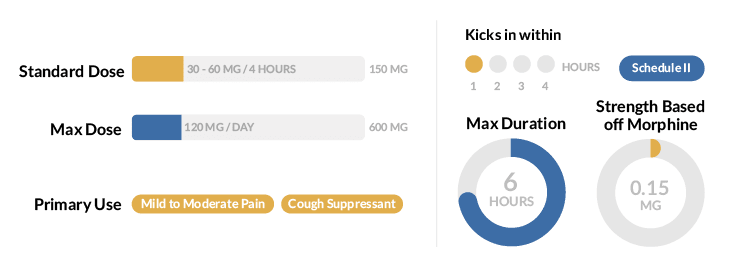
Codeine is one of the primary ingredients in a number of prescription cough medicines. Until February 1, 2018, Codeine was also available in many over-the-counter medications as well. Codeine is still easily accessible in most areas of the United States, despite increasing restrictions on its sale. While Codeine is not considered to be as addictive or dangerous as many other Opioids, it is still commonly abused. The greatest danger posed by Codeine is that it is a very common gateway drug into harder Opioids.
Demerol

Demerol is an extremely potent Opioid that is used almost exclusively to treat extreme pain in intensive hospital care. This potency also makes it an extremely attractive drug for abusers, and rates of Demerol addiction are rising rapidly. The drug comes in two forms, liquid and tablet. Unfortunately, Demerol’s potency also makes it extremely addictive and increases the risk of overdose.
Dilaudid
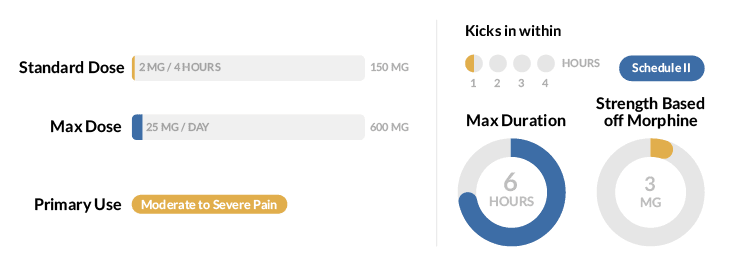
Dilaudid was designed to help cancer patients cope with extreme pain, and it is one of the strongest of all Opioids. Dilaudid produces an intense calming effect and feelings of euphoria, which make it an increasingly popular choice among Opioid abusers. However, this drug carries one of the highest risks of overdose of any drug, making it considerably deadlier than less potent Opioids.
Fentanyl
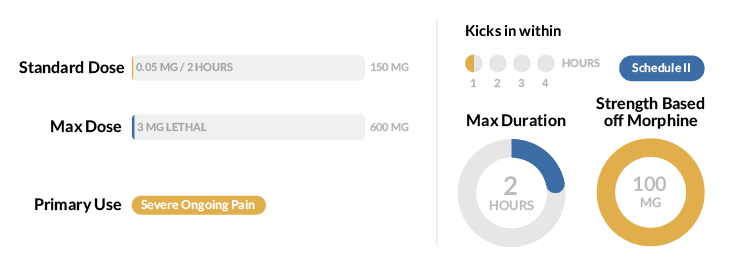
Fentanyl is a synthetic Opioid that is very similar to Morphine, only much stronger. In fact, Fentanyl can be up to 100 times stronger than Morphine. The drug can be used in many forms, including transdermal patches, lollipops, tablets, lozenges, nasal spray, buccal film, intravenous liquid, and powder. Fentanyl is entering the US in larger and larger shipments, and many illegal laboratories are producing the drug as well. Fentanyl abuse is one of the fastest growing drug problems in America, and addiction rates are skyrocketing. Fentanyl is very commonly added to other substances, especially Heroin, to increase their potency and lower their cost. Unfortunately, the drug is most deadly when mixed. Fentanyl is responsible for more overdoses in the US than almost any other drug, with some states such as Ohio seeing more than 40% of all overdoses involving Fentanyl. Fentanyl is so dangerous because like all Opioids, it causes the respiratory system to slow down, and eventually stop working entirely.
Heroin
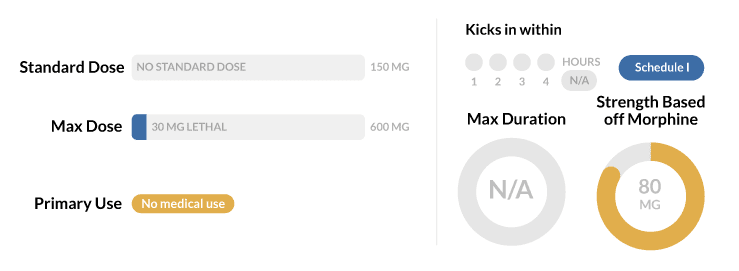
Until other Opioids became common, Heroin was the most widely abused synthetic Opioid in the US. Found in either a powder or a sticky gel known as black tar Heroin, the drug is one of the most addictive substances on the planet. Heroin is the most common intravenous drug and is generally associated with a number of blood diseases that can be transmitted by sharing needles such as HIV and several forms of Hepatitis. Heroin is infamously difficult to quit, and many users find that they must rely on long term treatment with Methadone to stay clean. Heroin withdrawal is known to be especially severe, leading addicts to do whatever they can to avoid its effects.
Hydrocodone

Hydrocodone is most commonly prescribed to relieve pain following dental surgery. The drug is similar to other Opioids, although it is considerably less potent than many others. Hydrocodone abuse can lead to addiction if the abuse continues for an extended period or a large amount is abused.
Paid Advertising. We may receive advertising fees if you follow links to the BetterHelp site.
Online Addiction Counseling
Get professional help from an online addiction and mental health counselor from BetterHelp.
- Personalized Matching Process
- Easy Online Scheduling
- 30,000+ Licensed Therapists
Methadone
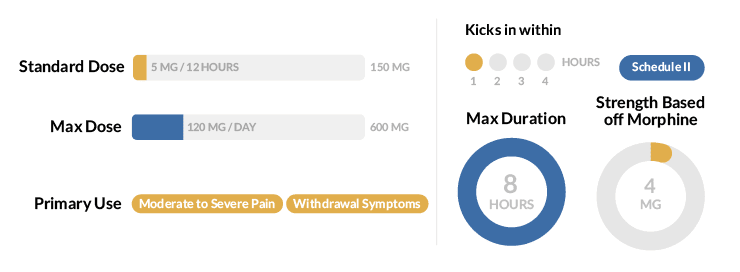
Methadone is used to treat Heroin addiction. This drug functions as a replacement for the stronger, more dangerous drug by allowing users to avoid the worst symptoms of withdrawal and cravings without providing the high associated with heroin. However, Methadone is a powerful and highly addictive Opioid in its own right, and many gain an addiction to this drug. For this reason, Methadone should only be taken under close medical supervision.
Morphine
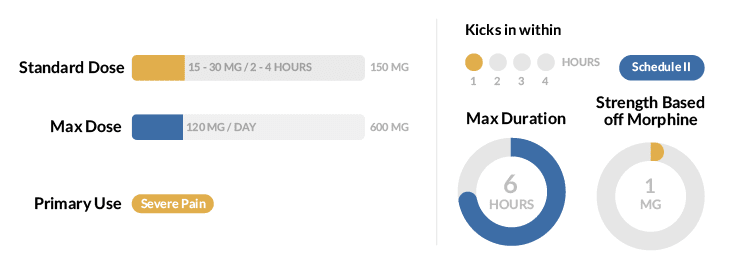
Morphine was one of the first painkillers to be man-made. It was once ubiquitous in hospitals, although it is less popular than it once was as other medications have replaced it. The drug is still commonly found on the black market, as it remains a popular drug of abuse due to its intensely pleasurable effects. Morphine addiction is known to be especially severe, and abusers are known to compulsively seek out the drug at any cost, which often leads to significant legal repercussions.
Oxycodone
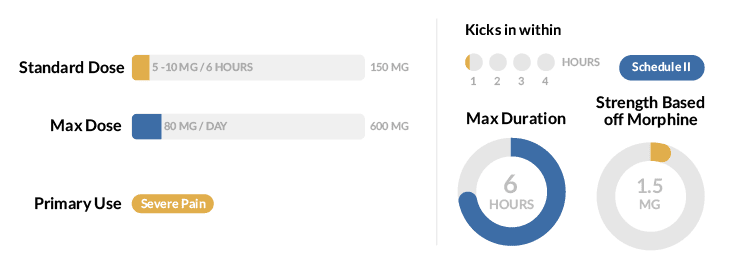
Oxycodone, commonly referred to as Oxy, is one of the most commonly abused medications in the United States. This powerful painkiller is designed for comparatively slow release, but many abusers snort the drug in order to get a more powerful high faster. However, this is highly dangerous and greatly increases the likelihood of overdose. This danger is increased as users develop a tolerance and have to take increasing amounts to feel the same effect.
Propoxyphene
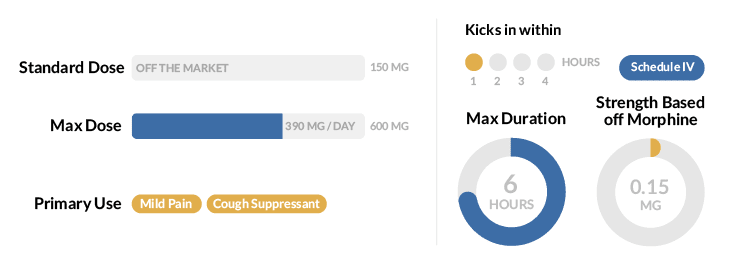
Propoxyphene, better known as Darvon or Darvocet, is no longer legally available. The drug was prescribed for moderate pain relief until 2010, when it was banned by the FDA. The drug provides a rush of euphoria, followed by intense feelings of tiredness. However, the drug is also very deadly, and regulators determined that the medicinal value of the drug was far outweighed by its extreme addictive potential and high likelihood of overdose.
Tramadol
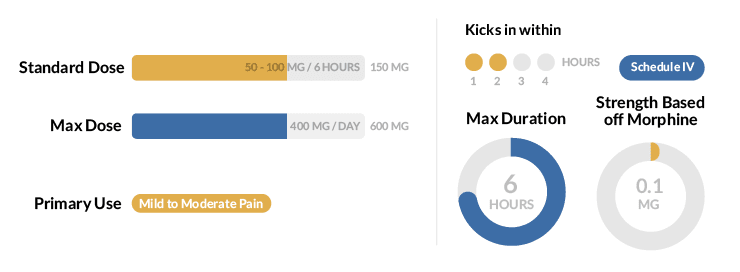
Tramadol is a comparatively weak Opioid that is used for the treatment of moderate pain. The drug is one of the most commonly prescribed painkillers in the United States because it is not as addictive or as likely to cause overdose than most other similar medications. However, Tramadol is still commonly abused, and it is possible to become addicted to or overdose on the drug. The biggest concern with Tramadol is that it is frequently a gateway drug to other Opioids, where users who become hooked on Tramadol try to find increasingly power drugs to get a stronger high.
Get Help Today
An Opioid addiction can affect all aspects of an individual’s life. Luckily, hope is out there. With treatment, a person with an addiction to Opiods can begin a life in recovery. Contact a treatment provider today and find out about your treatment options.
Start Your Recovery Today
Help is available. Explore your recovery options and break free from addiction.
